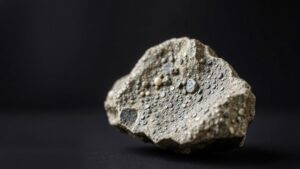Unearthing fossilized ammonites in the limestone beds of France’s Provence region.
Unearthing Fossilized Ammonites in France’s Provence Region
For rockhounds and mineral collectors, the limestone beds of France’s Provence region present an unparalleled opportunity to discover fossilized ammonites. These fascinating cephalopods thrived during the Mesozoic Era, over 200 million years ago, and provide valuable insights into prehistoric marine life. In this article, we will explore the geological context, significance, and practical tips for those interested in fossil hunting in this picturesque area.
The Geological Context of Provence
The Provence region is characterized by its stunning limestone formations, primarily composed of sedimentary rocks formed from marine deposits. e limestone beds, laid down during the Late Jurassic to Early Cretaceous periods, are rich in fossil deposits, including ammonites, which are recognized by their distinctive coiled shells.
Ammonites are part of the subclass Ammonoidea and belong to the class Cephalopoda, closely related to modern squid and octopuses. Their shells, often featuring intricate patterns and varying sizes, serve as key identifiers for researchers and fossil enthusiasts alike. The fossilized remains of these creatures can range in size from mere centimeters to impressive specimens measuring over a meter in diameter.
Significance of Ammonite Fossils
Fossilized ammonites play a crucial role in paleontology for several reasons:
- Biostratigraphy: Ammonites are used as index fossils due to their rapid evolutionary changes and wide geographic distribution. This makes them vital for dating strata in geological formations.
- Paleoecology: Studying ammonite fossils helps researchers understand prehistoric marine ecosystems and the evolutionary relationships among marine life.
- Collectibility: The aesthetic appeal and historical significance of ammonites make them highly sought after by collectors and enthusiasts around the globe.
The Ammonite Hunting Experience
For collectors eager to unearth ammonites in Provence, there are several sites known for their fossil abundance:
- Luberon Natural Regional Park: This area is famous for its rugged terrain, offering a wealth of fossil-rich limestone deposits.
- Montagne Sainte-Victoire: A geological hotspot where numerous ammonite species can be found, including the well-known Parapuzosia.
- Vaucluse Region: Known for its rich deposits of Middle Cretaceous ammonites, ideal for both amateur and experienced collectors.
Practical Tips for Collectors
Embarking on a fossil hunting adventure in Provence can be rewarding but requires careful preparation. Here are some essential tips for successful ammonite hunting:
- Research: Familiarize yourself with the types of ammonites found in the region, their characteristics, and the best places for fossil hunting.
- Get the Right Equipment: Bring tools such as a geologists hammer, chisel, safety goggles, and a sturdy backpack. A field guide can also be invaluable for identification.
- Follow Local Regulations: Always obtain permission if necessary, and respect the preservation efforts of local parks and natural areas.
- Collect Responsibly: Limit your impact by collecting only loose fossils or those already in the surface layer; avoid large excavations that can damage the environment.
- Join a Community: Connect with local rockhounding clubs or organizations. often have guided trips and workshops that can enhance your collecting experience.
Real-World Applications
The thrill of discovering fossilized ammonites goes beyond personal enjoyment; these fossils contribute significantly to science and education. Local museums and universities frequently use these finds to conduct research, enhance educational programs, and showcase Earth’s history. By collecting responsibly, individuals not only enrich their personal collections but also contribute to the preservation and study of prehistoric life.
Conclusion
The limestone beds of Provence, with their rich fossil heritage, offer an exciting adventure for rockhounds and mineral collectors. By understanding the geological context, recognizing the significance of ammonites, and following responsible collecting practices, enthusiasts can fully enjoy the hunt while contributing to the field of paleontology. So pack your tools, prepare for exploration, and embark on an unforgettable journey into the depths of Earth’s history.



